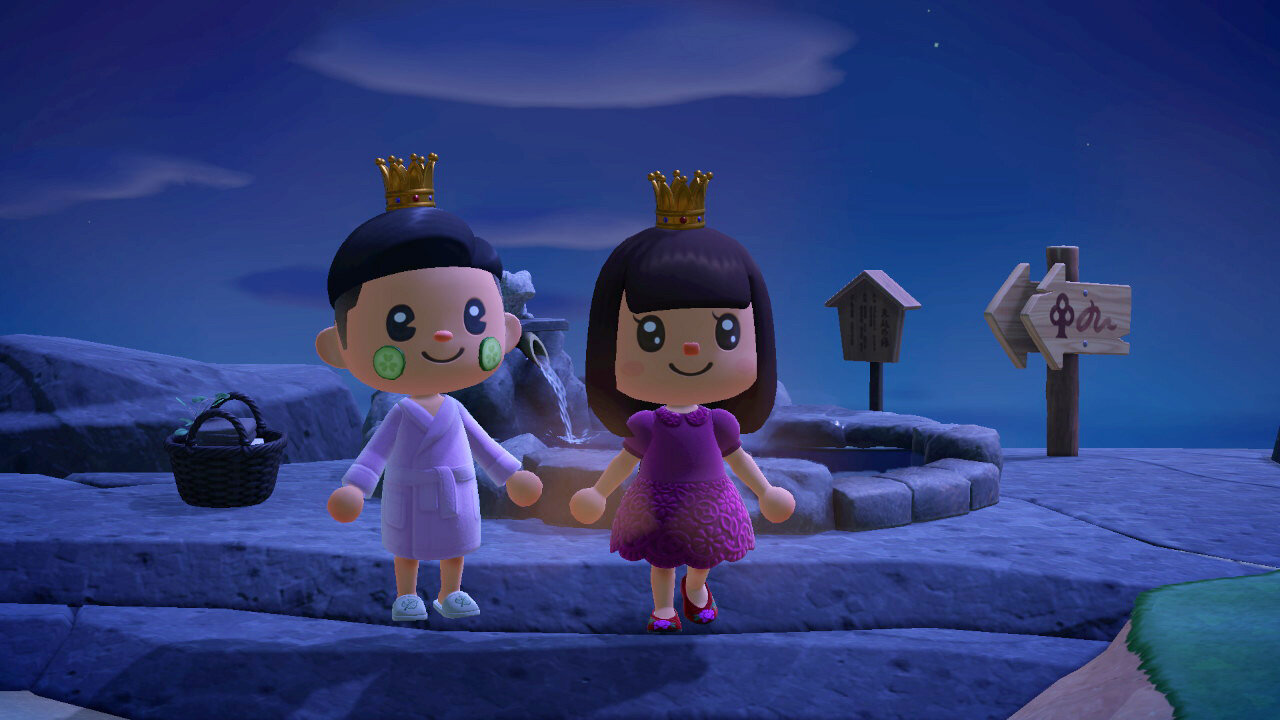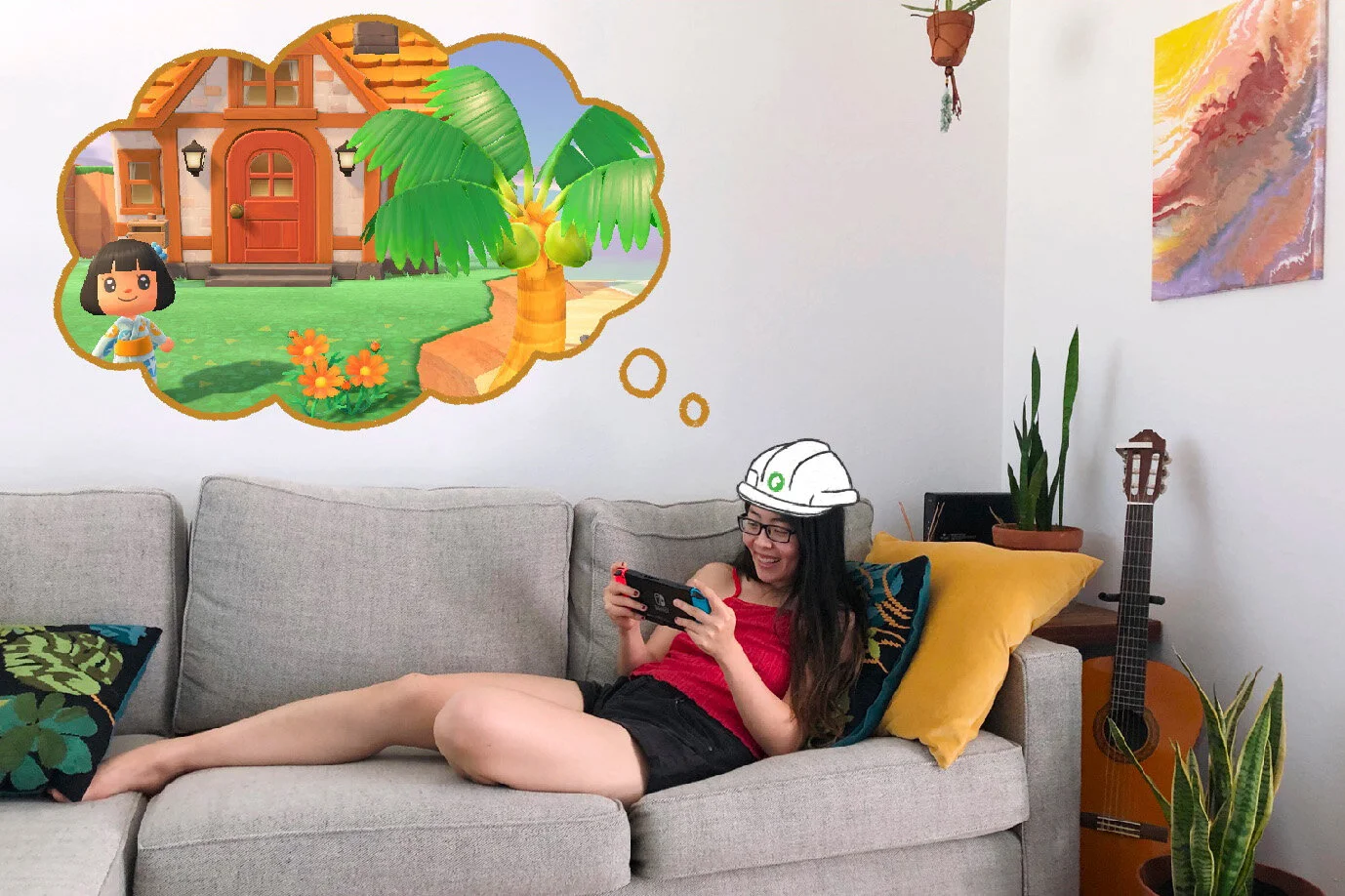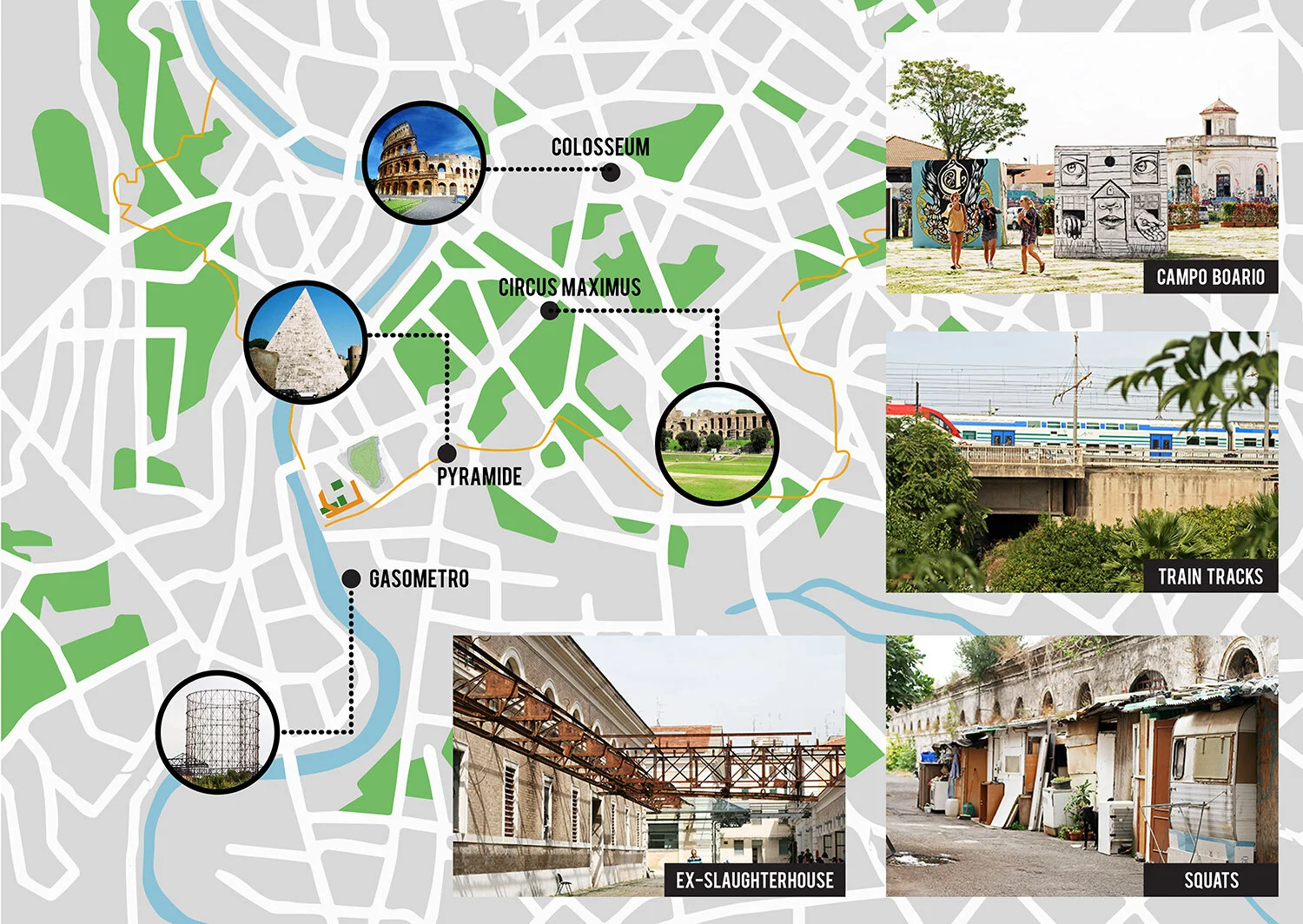Play
I don’t play games.
I’m the kind of person who actively tries to do as many productive things as possible in a day. I work, I keep myself busy with side projects, but I definitely don’t play games. I thought they were trivial and a time sink. Until a month ago.
I was curious about Animal Crossing, the game all my friends (and the world) were raving about. Simon’s been playing the game since it came out, and added me as a second player on his island. I was apprehensive as he showed me around. But once the controller was in my hands, I was hooked.
The next few days was a whirlwind of virtual island life. I was sad to put the game down to even eat meals. All stimulated from the game, I’d toss and turn in bed, dreaming about not being able to dig up fossils. My brain would wake me up at 7 am and I’d run straight to the charging dock to grab my red and blue drug.
But I don’t play games. So how did this diversion turn into an obsession?
Game Design
This game is one of the most impressive things I’ve seen. Besides the impeccable timing of its release, Animal Crossing: New Horizons draws upon every element that makes a game successful. I had to figure out the root of my addiction.
The Everyday Life
This game simulates daily life, something we’re used to, especially now when we long for an escape from our homes. The game happens in real time, and you have the choice to do what you want, in a beautiful unplagued world that is kind, positive, and full of joyful and cute characters. It captures the most exciting aspects of a pastime rooted in escapism and transforms it into an easy low-commitment daily routine. Its familiarity brings me comfort and calm.
Collection & Progression
People love to collect things. We feel the desire to complete actions and collect points, items, and rewards. This game is indeed a reflection of how much effort you want to put in. There is always a progress indicator and a feedback loop that constantly rewards you. And at the end of the day you’re proud of what you’ve done and there’s something to show for it.
Surprise
There’s always something new. Mystery balloons, visiting villagers, surprise gifts in the mail, new creatures and features. The mystery incentivizes you to log on and play a little everyday. Maybe even a lot. Once you get started, there’s always so much to do. The randomness adds an element of surprise and delight to the game that gets you hooked. Over time, it becomes a habit.
Achieve vs. Explore
This game respects both achiever and explorer types of players. You can do what the game tells you to — catch bugs, make money, earn miles, up your island rating. Or you can do you own thing and explore the world you live in. The game lets you choose your own pace and what you want to spend your time doing. The freedom and sense of control both the curious and structured types of players.
Charm
Gosh darn this game is beautiful. It’s naive art style, soft yet vibrant color palette, and alluring background music are warm and inviting. The dialogue is cheesy but entertaining, and the sky is always ever-changing and magical to watch. I love how rich the game elements are, and how much attention the designers put into every detail. I’m enthralled by the way the top of a vending machine reflects the moonlight, and how a fan placed next to a clothesline will actually blow at the clothes. As you connect to internet, the game shows a montage scenes that depict the adorable journey of flying to another island. You watch your friend walk through your airport gates, mirroring that all too familiar moment of delight we experience in real life. Finally, the sound effects blow my mind — the clacking of Japanese sandals running across wooden floors, the rustling of the leaves when you shake a tree, the splash of water when the fish finally bites. Every detail is impeccably designed and considered. I am so impressed.
Social Connection
A game’s social element is vital to its longevity. I share Simon’s island with him, so when we play it feels like we’re building something together. (This idea of creating a space for a family to interact asynchronously was actually what motivated game designer Kaysuya Eguchi to develop Animal Crossing 20 years ago.) The emphasis on family, friendship, and community is what makes the game feel familiar to us. In the middle of a pandemic, this game allows my friends and I to go on fun virtual adventures in foreign places even though we’re stuck in our homes.
The social media presence for New Horizons has also been huge. Getting design inspiration from others, sharing custom designs, and cheering each other on as we embark on our island-building journey makes this game so much bigger than just myself and my island.
Fun
Honestly, during a time like this, it’s fun just to play. This game taps into this fun by allowing you to explore, hang out, earn rewards, work with others, collect things, share, show off your creativity, and even goof off. These different types of fun allow different types of players to find joy in some aspect of the game.
For millennials like me, this game also allows us to indulge in the fantasy of home ownership. Having complete control over my life and my world, even if it’s just a virtual one, is thrilling.
Hell yeah.
Designing My Island
Just like any other piece of work I show on this blog, I followed my curiosity and explored my creativity in new ways that challenge me. This past month, my challenge was, you guessed it… Animal Crossing. As dumb as it sounds, this game gets me excited to wake up in the mornings. I spent an embarrassing amount of time planning my island before I realized why it put me in a state of flow. I was designing. This game is a dangerous time sink in the hands of a perfectionist ex-architecture student, but here is my attempt to justify my game playing by turning it into a design project.
Research
Okay so this is really just playing the game. I learned how to play and figured out the priorities of the client, aka myself. I did some site analysis and studied the island layout. (Where are the river mouths located? Which buildings are unmoveable?) I observed the weather patterns. I walked around and realize you can only see everything from one direction. I planted trees to see how much of the view they’d obstruct. I realized how loud waterfalls were. I observed the island inhabitants and visitors, learning about them and their preferences. (Yes, they’re virtual animals. I’m just trying to be formal with my process here.)
Observing the island and the magic that is sunset.
Double rainbow!
Meeting new villagers.
Wishing upon cryptic weather patterns.
Programming
When he started the game, Simon had placed villagers’ houses in a perfect grid so they were easily accessible. The shops were next to the town hall, and the museum was at the north end of the island because there was an empty plot of land. I took this general direction and ran with it.
I came up with a list of programmatic spaces I wanted on the island, and diagrammed the adjacent public and private areas, grouped by zones. Since the site is a deserted island, an element of nature would connect all the spaces.
Bubble diagramming the flow of public and private spaces.
Land-use zoning.
Circulation
After learning the mechanics of the game, I had to create a space optimized for daily tasks. I wanted river fronts to be clear for fishing. I wanted to be able to run through the island from one destination to another, so walkability became a central theme in this design. Our most used locations are our houses, Nook’s Cranny, the villager’s houses, and the town hall. They had to connect to one another (like the kitchen triangle) via central nodes and bridges. I didn’t want crazy terraforming, nor did I ever want to whip out a ladder or pole vault to get somewhere.
Circulation diagram. The gray lines represent the walkable paths.
Creating Spaces
Obviously the buildings themselves are destinations but the spaces between one another need to also make sense. That negative space can be shaped by rivers, cliffs, walls, hedges, paths, pavement, and trees. What makes one space flow into another? How can items be placed together to visually show the idea of a certain type of space, but also maintain walkability? This took lots of experimenting and hedge building.
Sketching out my schematic master design before starting “construction.”
Using trees to to create a secluded lounge spot on the beach.
Using paths to create distinctly separate spaces for my playground and dog park.
Filling every “nook” and “cranny” with delightful little spaces.
If all else fails, use hedges to divide up spaces.
Decoration
Once these spaces were more or less sectioned off programmatically, the fun part is decorating them! (If only architectural design development was this fun.)
After you accumulate a good number of items in the game, you start grouping them together in terms of function, color, or vibe. Indoor items can be placed outdoors to create hybrid spaces. For example, I created an outdoor kitchen at our island restaurant, Overcooked-style. Simon loves piano, so we set up two piano performance spots on the island. I created a rainbow garden up in front to show off all my varieties of hybrid flowers and allow for easy picking. I created a spot on the rocks to show off shark statues, and chose dark blue colors to match the rocks, which is hauntingly beautiful on a rainy night. Everything was intentional, and boy was it fun.
Here are some of my favorite corners on the island.
Stern Grove-inspired natural performance area.
Beachside pool club.
Corner French cafe.
Shark island.
The bamboo garden.
Zen pond.
You gotta have a diner.
Picnic in the garden. The wooden stools are one of my favorite items in the game.
Magic night garden. I love the way blue and purple flowers glow under the night sky.
Concert stage. (In my Bug-Off outfit!)
Campsite under the stars.
A work-in-progress archaeological dig.
Delight
The richness of the game still amazes me everyday. You live on an island with ten villagers who have different personalities, preferences, and dynamics with each other. They may be NPCs but they’re full of surprises if you follow them around. One of their best traits is how they interact with the island you build. If you have flowers they’ll water them. If you have chairs they’ll sit. And the best part, when you leave out instruments they’ll sing. Because they hang out in the town plaza often, I placed musical instruments out in front to set them up for mini performances.
Tea at Tia’s with Audie.
Plant shop. Norma stared at this flower for an hour.
Rainbow garden with Hazel at the Friends fountain.
Red Redd’s beach.
Social
As I pointed out earlier, one of the best parts about playing Animal Crossing is doing so with friends. You can visit each others’ island, trade things, wish upon stars, and hang out together. I created outdoor markets for friends to “shop” for items and recipes. I created a fashion runway next to the Able Sisters so we can put on a fashion show with wand outfits. I have outdoor spaces with ample seating so friends can come for a dinner and a movie.
Free & For Sale marketplace.
Movie theater build into the cliffside.
Simon’s and my cutie patootie characters in multiplayer mode.
A meteor shower with friends (and sneaky little Celeste)
There’s still a lot of work to do decorating beaches, laying out villagers’ yards, and collecting better items to decorate with. (If you have a coconut juice, barrel, or tiny library recipe HMU!) I can’t wait to see what’s in store for the game in future updates.
Screenshots from Nintendo’s Animal Crossing, obviously, and “photography” by me lol. Credits to amazing online creators for all the custom designs I used, and the talented Animal Crossing online community on Twitter and Reddit for so much inspiration.
It’s a little different from the the usual content, but I hope you enjoyed this silly blog post that I actually spent a LOT of time working on. I’m embarrassed but also proud of all the “play” I’ve done in quarantine. But hey, maybe connecting with your inner-child isn’t so bad. She would’ve been proud.













































